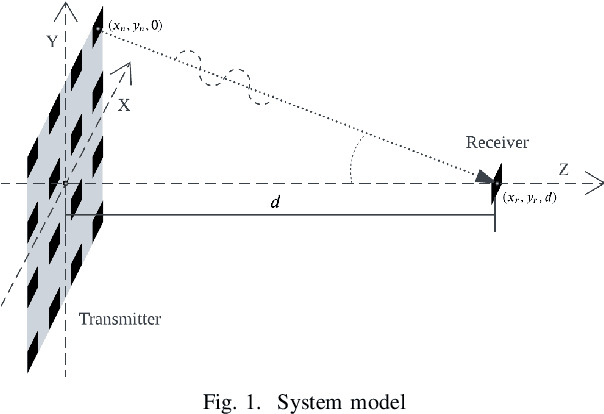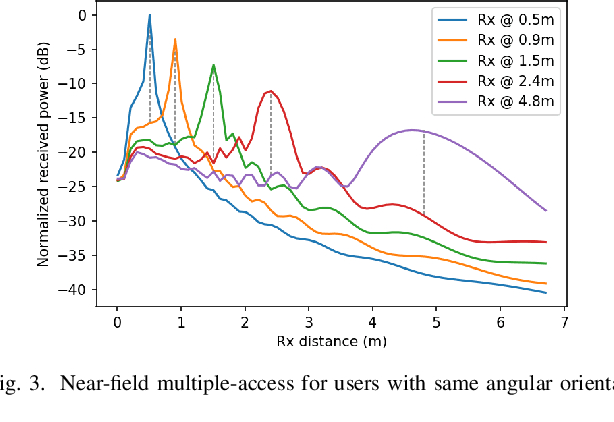Towards Bridging the Gap between Near and Far-Field Characterizations of the Wireless Channel
Paper and Code
Mar 10, 2024


The "near-field" propagation modeling of wireless channels is necessary to support sixth-generation (6G) technologies, such as intelligent reflecting surface (IRS), that are enabled by large aperture antennas and higher frequency carriers. As the conventional far-field model proves inadequate in this context, there is a pressing need to explore and bridge the gap between near and far-field propagation models. Although far-field models are simple and provide computationally efficient solutions for many practical applications, near-field models provide the most accurate representation of wireless channels. This paper builds upon the foundations of electromagnetic wave propagation theory to derive near and far-field models as approximations of the Green's function (Maxwell's equations). We characterize the near and far-field models both theoretically and with the help of simulations in a line-of-sight (LOS)-only scenario. In particular, for two key applications in multiantenna systems, namely, beamforming and multiple-access, we showcase the advantages of using the near-field model over the far-field, and present a novel scheduling scheme for multiple-access in the near-field regime. Our findings offer insights into the challenge of incorporating near-field models in practical wireless systems, fostering enhanced performance in future communication technologies.
 Add to Chrome
Add to Chrome Add to Firefox
Add to Firefox Add to Edge
Add to Edge